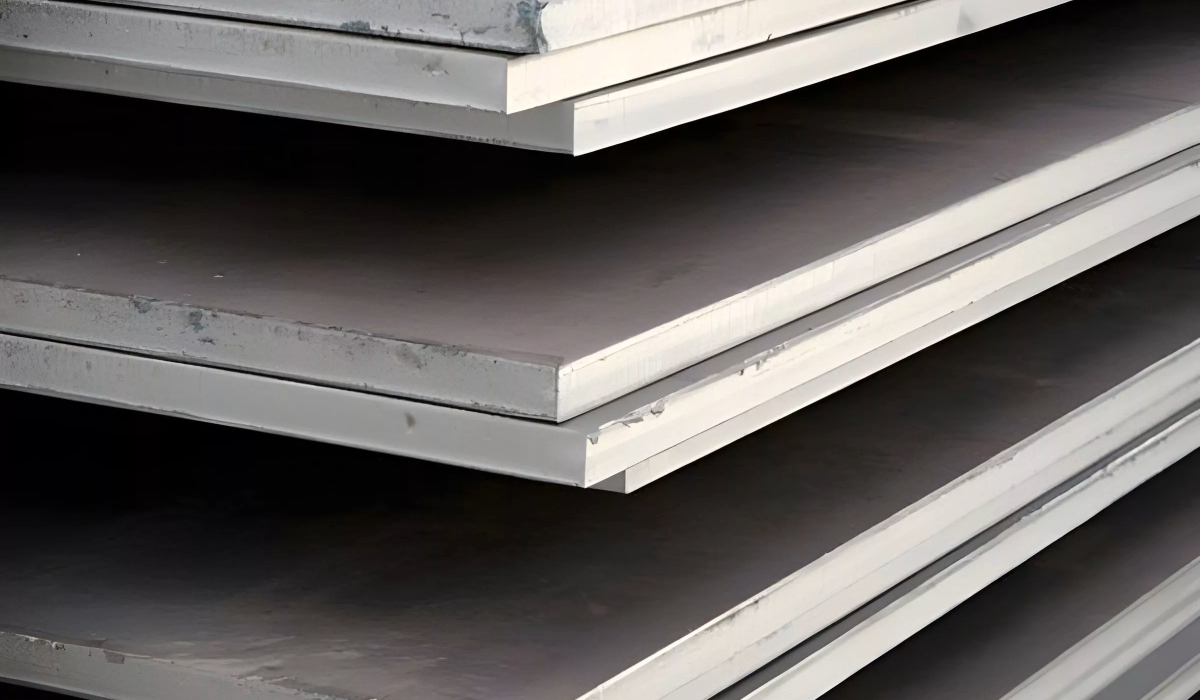
Pressure Vessel Steel Plates
A pressure vessel steel plate is a type of steel specifically engineered to be used in the fabrication of pressure vessels and boilers. These plates are designed to withstand the immense pressure and high temperatures involved in these applications, making them crucial for industries such as energy production, chemical processing, and petrochemical manufacturing.
Specifications
| Property | Details |
|---|---|
| Material | Carbon Steel |
| Grades | ASTM A516 Grade 55, 60, 65, 70 |
| Thickness Range | 6 mm to 150 mm |
| Width Range | 1500 mm to 3500 mm |
| Length Range | 3000 mm to 12000 mm |
| Tensile Strength | 380-620 MPa (varies by grade) |
| Yield Strength | 205-450 MPa (varies by grade) |
| Applications | Pressure vessels, boilers, storage tanks, and heat exchangers |
| Standards | ASTM A516, ASME SA516 |
Manufacturing Process
Steel Making Involves melting raw materials in a furnace and refining the steel to achieve the desired chemical composition and Continuous casting or ingot casting methods are used to form slabs and Rolling Hot rolling processes are used to form steel slabs into plates of desired thickness Controlled rolling techniques can enhance mechanical properties by refining the grain structure and Heat Treatment Normalizing, quenching, and tempering processes improve the toughness and strength of the steel plates Post-weld heat treatment (PWHT) may be required to relieve stresses and enhance properties after welding and Quality Control Non-destructive testing (NDT) methods like ultrasonic testing, radiographic testing, and magnetic particle inspection ensure the integrity of the plates Mechanical testing for tensile strength, impact resistance, and hardness is performed to verify compliance with standards.
Key Features and Requirements of Presure Vessel Steel Plate
- Material Composition: Common grades include ASTM A516 , A537, A285, and A387. Typically made from Carbon Steel , alloy steel, or Stainless Steel . Alloying elements like chromium, molybdenum, and nickel are often added to enhance strength, corrosion resistance, and durability.
- Mechanical Properties: Good toughness to prevent brittle fracture. Excellent ductility for forming and welding processes. High tensile strength and yield strength to withstand internal pressure.
- Thermal Properties: Resistance to thermal fatigue and creep. Ability to withstand high temperatures without significant loss of strength.
- Corrosion Resistance: Essential for vessels used in corrosive environments, such as chemical processing plants. Stainless steel and alloy steel grades provide enhanced resistance to oxidation and corrosion.
- Standards and Specifications: Must comply with international standards such as ASME, ASTM, EN, and ISO. Ensures uniformity and reliability in performance across different applications and regions.
Applications
- Energy Sector: Used in the construction of boilers, heat exchangers, and reactors in power plants. Essential for the safe operation of nuclear reactors and fossil fuel power stations.
- Oil and Gas Industry: Critical for the transportation and storage of hazardous gases and liquids. Employed in the manufacturing of storage tanks, separators, and pressure vessels for upstream and downstream processes.
- Chemical and Petrochemical Industries: Used in reactors, distillation columns, and processing equipment. Must withstand corrosive chemicals and high-temperature operationsl.
- Other Industries: Marine engineering for shipbuilding and offshore platforms. Food and beverage industry for high-pressure sterilization and processing equipment.
Chemical Composition of Copper Fasteners
| Element | Content (%) | Purpose |
|---|---|---|
| Carbon (C) | 0.15 - 0.30 | Improves hardness, strength, and wear resistance. |
| Manganese (Mn) | 0.60 - 1.20 | Enhances toughness and hardenability. |
| Silicon (Si) | 0.10 - 0.50 | Increases strength and improves oxidation resistance. |
| Phosphorus (P) | ≤ 0.035 | Kept low to maintain ductility and prevent brittleness. |
| Sulfur (S) | ≤ 0.035 | Controlled to avoid brittleness and improve machinability. |
